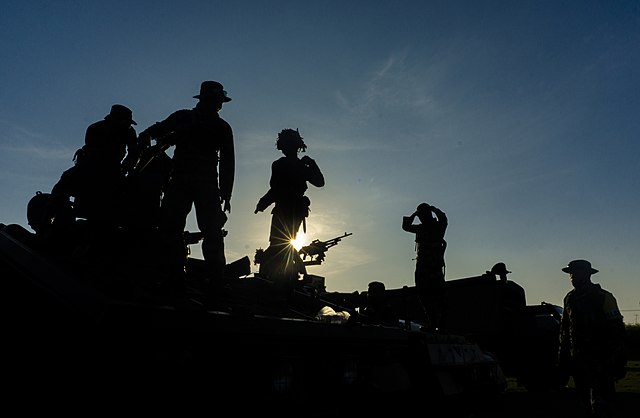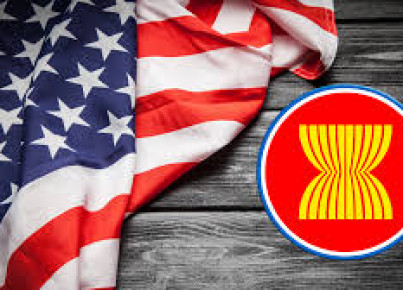Acronyms for policies in the Indo-Pacific are multiplying. But as China and the United States seek to consolidate their influence in Asia, countries on the continent try to shield themselves from the consequences of this antagonism by setting up bilateral agreements that help maintain a certain degree of interoperability without being forced to openly take the side of one or the other power
Article by Lucrezia Goldin
Either with me, or against me. Unless we find a third way to consolidate defense. In the increasingly polarized competition between China and the United States, bilateral security relations are growing between several Asian countries, which, with an approach made up of individual military cooperation agreements, are trying to free themselves from the magnetism of Washington and Beijing, exploiting regional interoperability as the key to independence from the two powers. An approach that, operating without clamor and without obvious anti-China or anti-US aims (as some multilateral initiatives such as Quad and Aukus on the Chinese side and the Global Security Initiative on the US side are perceived to be), takes the form of an alternative architecture that allows Asian countries to equip themselves with deterrence tools without the risk of annoying the two powers.
From Japan to South Korea, via Singapore and the Philippines, bilateral exchanges on security technology and defense equipment show an Asia that would rather not get caught in the crossfire of high-sounding acronyms between China and the United States. A move to the rear made up of apparently second-rate but strategic agreements, especially if conceived as an instrument of long-term independence from the viewpoint of the large antagonistic blocs.
The undisputed leader of this trend is Japan. For several years, Tokyo has been trying to revive its defense industry, and to do so, it is intensifying its relations with several South-East Asian countries. As early as 2016, Japan and the Philippines signed a defense agreement, whereby Tokyo pledged to supply security equipment and technology to Manila. Under the presidency of Rodrigo Duterte then, an update to the same agreement in the summer of 2020 led to the sale of radar control systems from Mitsubishi Electric to the Philippine government, marking the first sale of fully Japanese-made defense technology to a Southeast Asian country. With Malaysia, on the other hand, there is the Japan-Malaysia Defence Pact of 2018, while on relations with Indonesia and Vietnam, former Japanese Prime Minister Yoshihide Suga's focus has led to the signing of two agreements for the transfer of defense equipment and technology (in March and September 2021 respectively). Even trying not to draw too much international political attention with these agreements, Tokyo's stated aim is to promote its vision of a 'free and open' Indo-Pacific. This vision was also confirmed by Defence Minister Kishi Nobuo last September during a visit to Hanoi, in which he spoke of cooperation with Vietnam as being aimed at 'contributing to peace and stability in the region and the international community as a whole'.
On this front, the new Prime Minister Fumio Kishida is also wasting no time. Last May, the Japanese Prime Minister and his Thai counterpart Prayut Chan-o-cha signed an agreement for the transfer of military equipment to Thailand, which was shortly followed by the Japanese government's announcement that it would reform its regulations on the export of military equipment so as to allow the export of missiles and fighter jets to 12 countries including India, Vietnam, Thailand, Malaysia, the Philippines and Australia from 2023. Also with Singapore, as announced during a meeting on the sidelines of the Asian security summit, the Shangri-La Dialogue, negotiations will soon begin to reach an agreement on the transfer of defense equipment and technology, which also includes the areas of cyber security and chemical, biological, radiological and nuclear (CBRNE) explosive weapons. An enhanced Defense Exchange Memorandum, signed by the respective Defense Ministers Kishi Nobuo and Ng Eng Hene, complements the one signed between the two countries in 2009. The aim: to move towards 'more concrete security cooperation'. Less talk, more agreements. Without China and the USA in the way.
Active participation also on the part of India, which with the India Act East Policy created platforms for dialogue and joint maritime exercises with Singapore and Thailand, the SIMBEX and SITMEX, with the aim of maintaining regional security. To the Philippines, New Delhi provided its Brahmos missile systems and arranged for the movement of several ships of India's Eastern Command to facilitate bilateral exercises with the Philippine Navy. Dialogue with Vietnam has also been productive and free of US or Chinese interference. In 2016, a $500 million line of credit was established between Hanoi and New Delhi for the purchase of new defense platforms, and today most Vietnamese pilots are trained at Indian training bases in exchange for access to naval and air bases in Cham Ranh Bay. Finally, with Thailand, India shares maritime objectives related to issues such as illegal fishing, drug trafficking, smuggling, and piracy, confirming an interoperability that remains strong between the two countries both because of their historical and cultural backgrounds and because of their common interests related to the maritime border in the Andaman Sea, a key access point for trade in the Strait of Malacca.
South Korea has also given signs that it wants to join this 'behind-the-scenes' strategy. The Moon Jae-in administration had started to intensify relations with India and ASEAN countries through the New Southern Policy of 2017, but failed to materialize many agreements and cooperation independent of existing security platforms. The case of the Indonesian non-participation in the realization of the new Kf-X/IF-X fighters is an example of this. After a defense agreement between South Korea and Indonesia concluded in 2013, the two countries "encountered several complications" in the joint realization of new equipment, but to date they maintain good relations and at the presentation of the new 2021 Korean KF-X fighters, Indonesian Defense Minister Prabowo Subianto had also been invited. Also as part of the Shangri-La Dialogue sideline meetings, on the other hand, Singapore and South Korea updated their Memorandum of Understanding on defense cooperation, adding cybersecurity and maritime cooperation as collaboration priorities.
Asia is also moving without China and the United States, aware that excessive dependence on either side in security matters can prove counterproductive. For existing disputes with Beijing on the one hand, for the recent unpredictability shown by Washington from Donald Trump onwards on the other. Small agreements in times of big multilateral pacts thus mark a third way to try to maintain regional stability without being mere pawns in the game of others. But the agreements are beginning to be many. And when viewed as very thin threads of a broader, more expansive strategic canvas, the formula of the bilateral agreement as an inoffensive means of maneuver could be called into question.






